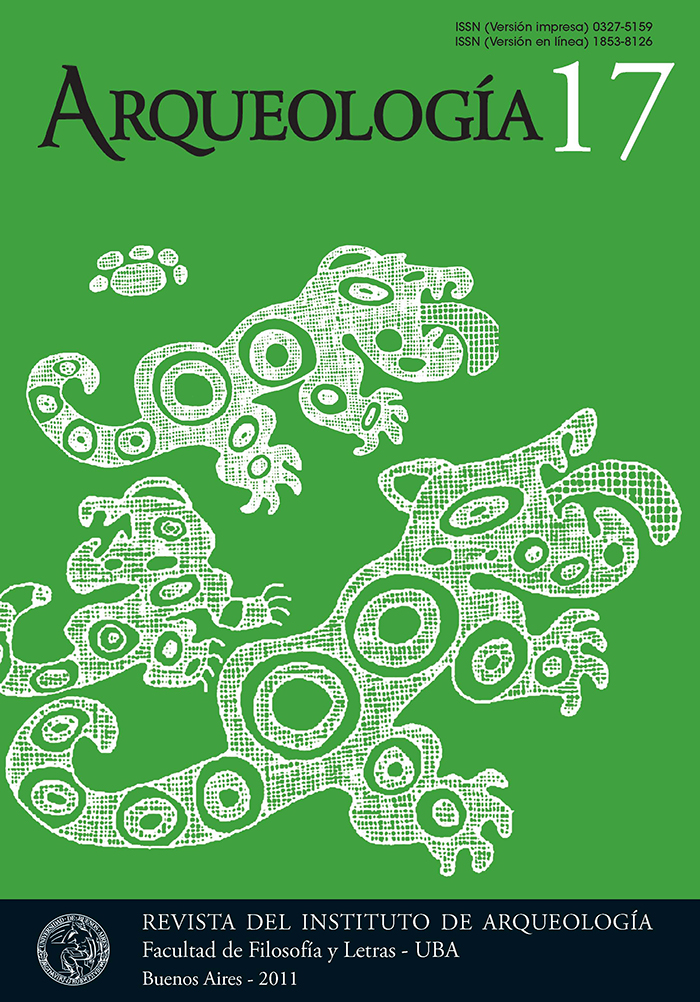Early occupations archaeofauna at Cueva Traful I, Neuquén province, Argentina
Keywords:
Patagonia, Early Holocene, subsistence, guanaco, small game hunting
Abstract
The early occupation of northwestern Argentinean Patagonia dates of ca. 10.000 AP., but little is known of the subsistence of the first hunters and gatherers and the seasonality of their occupations. The analysis of the remains deposited in cave Traful I during the early Holocene can give us some answers. Therefore, we studied the structure of the assemblages from a taphonomic perspective in order to determine which were the main agents and processes that formed them. The initial occupations were ephemeral and the fauna is composed mainly of small game, fish, and scarce remains of Artiodactyla. The faunal assemblages of Component I (unit Traful) include, besides Lama guanicoe, two types of foxes, birds, rodents, and mollusks. The sequence indicates that small game was more important at the beginning and that subsequently, the guanaco gained importance. The absence of this ungulate could be due to the presence of the forest near the cave.Downloads
Download data is not yet available.
How to Cite
Cordero, J. A. (1). Early occupations archaeofauna at Cueva Traful I, Neuquén province, Argentina. Arqueología, 17, 161-194. https://doi.org/10.34096/arqueologia.t17.n0.1842
Issue
Section
Articles
Authors who publish in this journal agree to the following conditions:
- Authors retain copyright and yield to the journal right of first publication with the work registered with attribution license Creative Commons, which allows third parties to use the published always mentioning the authorship of the work and first publication in this magazine.
- Authors can make other independent and additional contractual arrangements for the non-exclusive distribution of the version of the article published in this issue (p. Eg., Inclusion in an institutional repository or publish it in a book), provided that clearly indicate that the work was published for the first time in this magazine.
- It allows and encourages the author / s to publish their work online (eg institutional or personal pages) before and during the process of revision and publication, as it can lead to productive exchanges and greater and more rapid dissemination of work published (See The Effect of Open Access).





(1)13.png)






1.jpg)
1.jpg)


13.png)
1.png)


(1)1.png)









